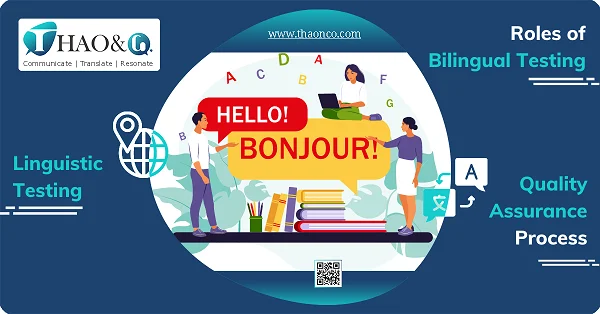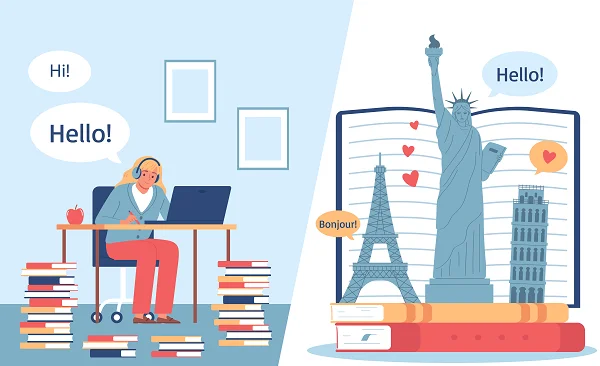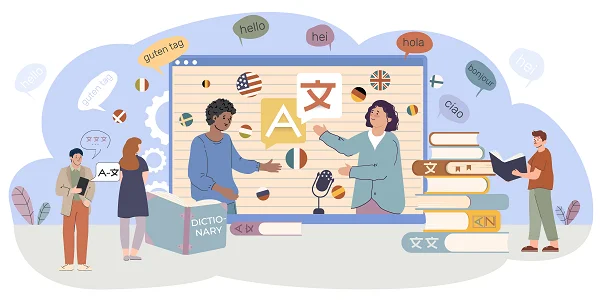What is linguistic testing? Ever wondered why linguistic testing is such a crucial step for websites and applications? In this article, Thao & Co. dives deep into this essential process, answering your burning questions and equipping you with practical tips to optimize your linguistic testing process. Buckle up, because we’re about to explore the nuances of making your digital offerings truly resonate across languages and cultures!
Before any localized product or service hits the market, there’s a crucial step that can’t be missed: localization testing. Through this step, the publisher can ensure that the localized version seamlessly aligns with the language, culture, and unique needs of the target audience.
The goal is to nip potential problems in the bud, like typos, awkward local keywords, or even legal violations. This proactive approach ensures a smooth launch and happy users.
Linguistic testing is the backbone of quality assurance in the world of localization. This process meticulously checks the accuracy, appropriateness, and compatibility of the language with the software and the target audience. This means ensuring that every word not only respects cultural sensitivities but also complies with local laws and regulations.
Linguistic testing happens hand-in-hand with localization testing, meticulously polishing the final product before it reaches users. This ensures a flawless release, free from any linguistic hiccups.

Why is bilingual version testing important? Bilingual testing helps the publisher ensure:
Linguistic testing is the final polish before a product hits the market, ensuring its language shines as brightly as its features. By ensuring impeccable language functionality and quality, your product soars to new heights of success with its target audience.
Publishers who skip software quality control steps risk a bumpy ride upon release. From language blunders that offend local cultures to other unforeseen pitfalls, the consequences can be far-reaching.
For example, Ubisoft had to recall the game MindQuiz from the market due to the use of offensive language and discrimination against people with disabilities in the UK version. Specifically, in the English version, MindQuiz used the term “super spastic” to describe when a gamer failed a challenge. However, this term was not present in the original Japanese version, suggesting it might have been a translator’s transcreation during the language conversion.
Meanwhile, this version was used in the Australian market without any issues. Ubisoft’s stumble underlines the steep price of neglecting linguistic testing. Meticulous linguistic testing is the shield that protects your reputation and unlocks global success.
As this is a crucial step in the software localization process, linguistic testers need to meet strict conditions to produce the final product of the highest quality.

Below are some practical tips for conducting software language testing:
This is one of the critical aspects that need to be tested. Translating software isn’t just about finding the right words. Languages like English and Vietnamese have vastly different grammar structures. For example, English relies heavily on tenses, while Vietnamese uses simpler verb forms. These grammatical differences make careful localization crucial. Overlooking them can lead to grammar errors, resulting in incomplete or inaccurate text that undermines user experience.
Spelling is also an essential aspect to ensure before releasing software to the market. Misspelled words might seem like a minor detail, but in a software release, they can be glaring distractions that erode trust and damage user experience.
Choosing the right language for the context is critical in localization.
For example, in the game Final Fantasy X, there is a farewell scene between Yuna and Tidus – her love interest. In the Japanese version, Yuna bowed and said “ありがとう” (thank you) to Tidus. For native speakers (Japanese), this gesture carries deeper meaning than the character’s words. When translated game dialogue into English, this phrase was rendered as “I love you” instead of “thank you.”
Experts believe that a simple translation such as “Thank you” would have difficulty capturing the full meaning of the scene and the character’s emotions. Therefore, the experts chose “I love you” for the final decision to convey the original version’s meaning to the fullest extent.
Cultural differences between countries can lead to variations in how people address each other. Therefore, testers need to ensure that translations use appropriate forms of addressing and politeness according to the local culture.
For instance, in Korean, there are three levels of honorifics used for different contexts and different individuals. Meanwhile, English also has polite ways of speaking, but they are not as clearly differentiated as in the communication culture of South Korea.
Therefore, for translations between these language pairs, testers need to have a clear understanding of both cultural backgrounds and carefully consider the context of the content to ensure the translation is appropriate.
This is also an extremely crucial issue in software localization. In fact, there have been cases where the use of sensitive terminology in the local context led to software recalls.
Therefore, testers must have a deep understanding of the local culture, and the testing process must be extremely meticulous to fully control this issue.
When converting from one language to another, issues related to display and fonts are quite common. These display and font issues often arise because languages have different structures and use different sets of characters.
Take English and Vietnamese, for example. English doesn’t use those little marks above or below letters, called diacritics, but Vietnamese does. This difference can cause compatibility problems between English and Vietnamese fonts, leading to font errors.
Font errors and visual glitches don’t just look unprofessional, they can make users feel like an afterthought, undermining trust and dampening their overall experience. The ripple effect of a poorly localized interface can be vast. Frustrated users not only abandon the software but also share their negative experiences, potentially damaging brand reputation and eroding user trust across languages.

How can software publishers optimize the linguistic QA process? Here are some suggestions for you:
Ready to take your software global? Let Thao & Co. be your trusted localization partner. With years of experience and partnerships with industry leaders like the online trading platform Trade360 (Crowd Tech Ltd.) and the innovative language learning app uTalk (uTalk Ltd.), we have the proven expertise to deliver flawless software localization.
Feel free to contact us through our Get A Quote. We will contact as soon as possible for futher information.
In order to enhance the effectiveness of the localization process, beyond the execution of projects by our team of native and experienced linguistics, we offer value-added services such as:

In addition, during the project execution, you can interact and communicate with our team of expert linguists through our exclusive platform. Enjoy 24/7 project monitoring, secure communication channels, and streamlined tools for instant feedback and approvals. Save time and gain complete control over your translation project, all in one convenient and secure environment.
Keep these insights in mind as you embark on your Software Linguistic Testing journey. May your software speak volumes, no matter the language. Thank you for joining Thao & Co. on this exploration of the power of words in a globalized world.
Your localization journey is unique, and we’re here to support you every step of the way. Have a question about website content, application translations, or software testing? We’re just a message away!